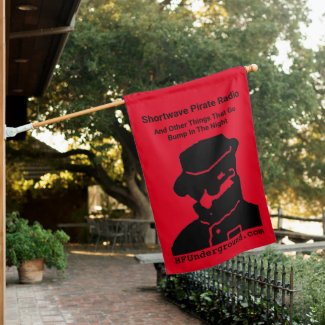[UDXF] Publications about Utility-DX
Nils Schiffhauer
To: UDXF@yahoogroups.com
Hi - as there has been some discussion recently on publications about
Utility-DX, here my opinion:
Utility-DX tries to answer mainly following questions:
a) What mode?
b) What station/net?
c) What schedule?
a) What mode?
To decode a signal, you better have to know the mode and it's parameters.
That's obvious for all, using decoders without classifier. But also decoders
with classifier can face severe problems in identifying fully automatically
the proper mode and it's parameters. Even for these mode, they have aboard.
This calls for additional software, printware or the internet to help here.
Bandwidth, symbol rate (measured e.g. with Signals Analyzer) and continuous
or burst transmission will give first clues.
My choice to be consulted first, is Roland's "Technical Handbook for Radio
Monitoring HF":
<http://www.frequencymanager.de/TH/th.html>
Most of the information, and even more of it, can be founded also "somewhere
in the internet". But I prefer this book - plus it's "Sound Examples" on CD
- as First Help (often more than that) and a reliable guide to ask Google
the right questions diving deeper.
Luckily enough, some vendors of decoders provide you with their manuals -
free of charge. These manuals often do contain valuable information on
identifying modes. Have a look e.g. at:
<http://www.wavecom.ch/content/pdf/manual_w-pcie-w-pci-w-cloud-and-w-code-v8
-4-00.pdf>
especially pp. 110-251
<http://www.shoc.ch/downloads.html?file=files/shoc/pdf/go2SIGNALS%20Manuals/
go2DECODE%20Manual.pdf>
see pp. 177-313
Examples of modes "in the internet" can help further, especially if they are
backed by screenshots. Without any restriction available for everyone e.g.:
<http://sferix.myweb.hinet.net/hfasia/>
b) What station/net?
Stations can be identified by callsign, ALE, mode, frequency,
communications, plain or tactical identification - etc. Books, although
outdated as soon as being printed, provide valuable assistance in amateur's
monitoring. These three are obvious:
Frequency Handbook for Monitoring HF
<http://www.frequencymanager.de/TH/th.html>
Spezial-Frequenzliste 2013/14
<http://www.amazon.com/Spezial-Frequenzliste-2013-14-Band-2/dp/3881808809/re
f=sr_1_2?ie=UTF8&qid=1392795262&sr=8-2&keywords=Spezial-Frequenzliste>
2013/2014 Guide to Utility Radio Stations
<http://www.klingenfuss.org/homepage.htm>
Which is "the best"? Quite easy to judge: Record three hours out of an
active part of "the band". Write down each and every (!) utility signal
until you keyboard smokes, look up each and every entry of your log in each
of the three books and mark it with red "no entry", yellow "incomplete, too
general or even misleading entry", green "correct entry". The book, which
first gets 100 greens, wins. You almost surely will land at the order given
above - with often a rather thin distance of the two first books.
UDXF's logs, compiled or in the group, are setting the gold standard.
At all sources, you will met also fakes, inconsistencies, vague information.
Competent discussion at UDXF will sort out most of these very quickly.
c) What schedule?
Easily to answer for FAX, VOLMET, maritime weather and even man ALE
stations. But reliable information is rarely found for the majority of the
stations.
---
73, Nils, DK8OK



